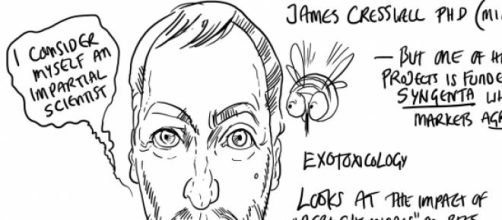Bees pollinate 3/4 of the crops we eat. A threat to bees is a threat to humanity! Plans are afoot in countries across Europe to deal with the threat and make life easier for the bee.
There are plans to reintroduce neonicotinoids, which not only appear to kill the bee population but also do damage to other insects and countryside flora. The problem is that the studies that have been carried out were fairly restricted in their methodology, because exposing bees to each toxin was not lethal, while scientists do not seem to have conducted detailed studies to demonstrate conclusively that in real life, bees can digest a cocktail of poisons that seriously impact on their health, and more importantly, on the viability of the hive.
It is not proven, therefore that neonicotinoids can cause colonies to collapse (colony collapse disorder, or CCD), but there seems enough anecdotal evidence to reach such a conclusion, and in the last year, while the pesticides have been banned, the bee population has made a tentative comeback.
Bees are threatened, Among the threats are the varroa mite, nosema and monoculture farming. The neonicotinoid threat is just one more threat while bees are also at the mercy of other pesticides too. Bees were already in decline before the introduction of neonicotinoid pesticides.
In 2014, an EU bill was successfully passed following the publication of the McIntyre report. But the bill only suspended the insecticides and meanwhile, the chemical producers, set to see millions lost while the ban remains, have been lobbying hard to get it reversed.
The UK was among the 12 countries that did not vote to support the ban, complaining that it carried significant costs to farmers. In fact, the four offending chemicals, thiamethoxam (Cruiser OSR), clothianidin, imidacloprid, and fipronil were introduced about 10 years ago and replaced insecticides that caused considerably greater harm. And there is now fear that these older insecticides might re-emerge if the current ban remains in force.
The UK believes sufficient research has not been done. Much hangs on the American studies of Chensheng Lu which have been criticized for having an odd methodology. In addition, the academic James Cresswell feels that the conclusions are not nearly strong enough.
Cresswell agrees that pesticides harm bees, but he says it is certainly not clear that neonicotinoids cause CCD, the destruction of the hive. Cresswell, however, has received funding from a major company producing such pesticides.
In the opposing camp are scientists apparently with direct links to or funded by NGOs keen to see an extension of the ban. Specifically, there seems to be involvement from a beekeeping lobby called "Apimondia", and the "Pesticide Action Network", PAN. So, scientific objectivity is compromised.
The debate continues while concerns about bee mortality will remain whether the specific pesticide ban is relaxed or not. At the same time, farmers have been deprived of one of the essential tools necessary to do the job and there are fears that a continued ban will harm our rural economy.
Farmers have already been hit hard by the abolition of the migrant worker's scheme.
Furthermore, by focusing too much on just one threat, we may miss the bigger picture but by ignoring this threat, even if the evidence is not conclusive, maybe we do greater harm?

